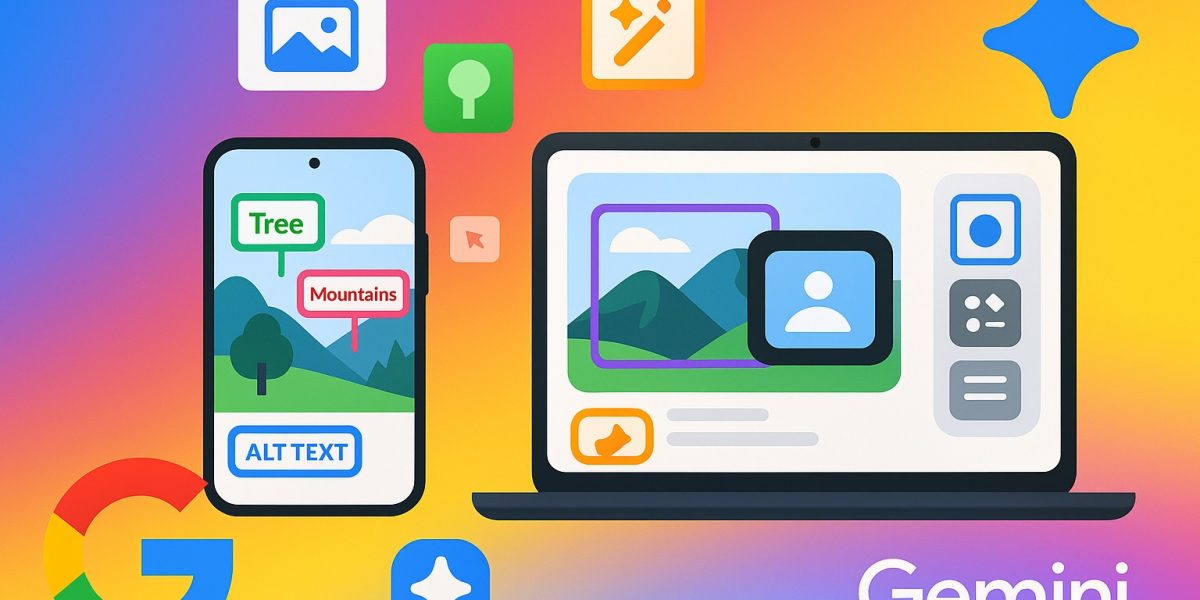Google is testing new image markup capabilities for its Gemini AI assistant that could transform how users interact with visual content. The feature, discovered through analysis of Google app version 16.42.61, allows users to highlight, circle, or draw on specific parts of images before submitting queries, enabling more precise AI responses.
The development signals Google’s recognition that effective AI visual analysis requires more than just uploading entire images. Users often want to ask about specific elements within photos, and current text-based clarifications like “the object on the left” introduce ambiguity that markup tools could eliminate entirely.
Precise Visual Communication Through Annotation
The markup interface appears when users select an image from their gallery or capture a new photo through Gemini’s camera function. Unlike current functionality where Gemini analyzes entire images uniformly, the new tools let users direct the AI’s attention to specific objects or areas within photographs.
“Instead of using ambiguous expressions like ‘that thing on the left,’ a quick sketch becomes a point of clear indication,” according to analysis of the feature’s potential impact. The markup system includes multiple color options, though their specific purpose remains unclear in the current development build.
This approach mirrors annotation tools that have proven valuable in professional contexts like medical imaging, architectural reviews, and design collaboration. By bringing similar capabilities to consumer AI assistants, Google addresses a fundamental limitation in visual AI interaction—the inability to easily specify exactly what you’re asking about.
The multiple color options suggest possible support for highlighting different elements simultaneously or perhaps indicating different types of annotations (questions vs. areas to ignore vs. areas to enhance). Until official documentation emerges, the exact implementation remains speculative.

Integration with Gemini’s Image Editing Capabilities
The markup tools integrate seamlessly with Gemini’s Nano Banana image editing capabilities, officially known as Gemini 2.5 Flash Image. This combination allows users to perform targeted edits on specific image sections, such as removing unwanted objects from screenshots or enhancing particular areas.
Practical applications range from students focusing on specific chart axes for analysis to support representatives circling error messages on screenshots for troubleshooting. The feature could also benefit retail teams extracting product information and designers highlighting logos for brand compliance testing.
These use cases reveal how annotation transforms AI image understanding from passive analysis to interactive dialogue. Rather than Gemini making assumptions about what matters in an image, users explicitly indicate their focus areas, reducing misunderstandings and improving response relevance.
The integration with editing capabilities proves particularly powerful. Users can mark areas for removal, enhancement, or transformation rather than describing desired changes in text. A circle around an object with the prompt “remove this” becomes far more precise than “remove the object in the background near the tree.”
Technical Implementation and User Experience
The feature’s appearance in APK teardown suggests Google is actively developing the functionality, though implementation details remain limited. The annotation interface likely operates as an overlay on uploaded images, with markup data passed alongside the image to Gemini’s vision models.
How Gemini interprets markup presents interesting technical challenges. The system must distinguish between annotation strokes and actual image content, understand that circled or highlighted areas represent user focus rather than new visual elements, and potentially weigh annotated regions more heavily in analysis.
The color coding system hints at potential complexity in markup interpretation. Different colors might signal different instruction types—red for removal, blue for questions, green for enhancement. Alternatively, colors might simply help users organize multiple annotations on complex images without semantic meaning to the AI.
Development Status and Release Timeline
While the feature was successfully activated in modified versions of the Google app, no official timeline exists for public release. Discovery through APK parsing indicates development is progressing, though Google hasn’t confirmed whether or when the markup tools will become publicly available.
The timing aligns with Google’s broader push to enhance Gemini’s visual capabilities, following recent improvements to image understanding in Gemini 2.5 Flash and general availability of Gemini 2.5 Flash Image for developers.
Google’s pattern with Gemini feature releases suggests a cautious rollout strategy. New capabilities often appear first in limited testing, then expand gradually through Workspace Labs or trusted tester programs before reaching general availability. The markup tools will likely follow a similar progression, assuming they advance beyond internal testing.
Competitive Context and Market Implications
Image markup for AI assistants isn’t entirely novel—several specialized AI tools already offer annotation-based interaction. However, integrating these capabilities into a mainstream AI assistant with Gemini’s user base could significantly impact how people interact with visual AI.
Claude and ChatGPT currently lack comparable annotation interfaces, though both support image uploads with text descriptions. If Google successfully launches markup tools, competitors will likely develop similar features to maintain parity in visual AI capabilities.
The markup approach also addresses accessibility considerations. Users who struggle to describe visual elements in text gain an alternative interaction method through drawing and highlighting. This multimodal input option broadens AI assistant usability across diverse user populations.
Practical Benefits for Specific User Groups
Different user populations stand to gain distinct advantages from markup capabilities:
Students and educators can circle specific formula components, graph sections, or diagram elements when asking for explanations, ensuring AI responses address precisely the concepts causing confusion.
Technical support professionals can annotate error messages, system states, or interface elements when seeking troubleshooting assistance, reducing back-and-forth clarification that currently slows support workflows.
Creative professionals can mark specific design elements for AI analysis, ask for style matching on highlighted portions, or request variations of circled components while preserving surrounding context.
Accessibility users who find visual description challenging gain an alternative method for specifying areas of interest through simple drawing gestures rather than precise spatial language.
Whether Google’s markup tools for Gemini reach public release depends on internal testing results, user feedback from limited trials, and strategic priorities around visual AI development. The feature’s discovery in recent app versions suggests serious development investment, though many experimental features never graduate beyond internal testing. If deployed successfully, markup could establish a new interaction paradigm for visual AI that competitors rush to match.




Post a comment